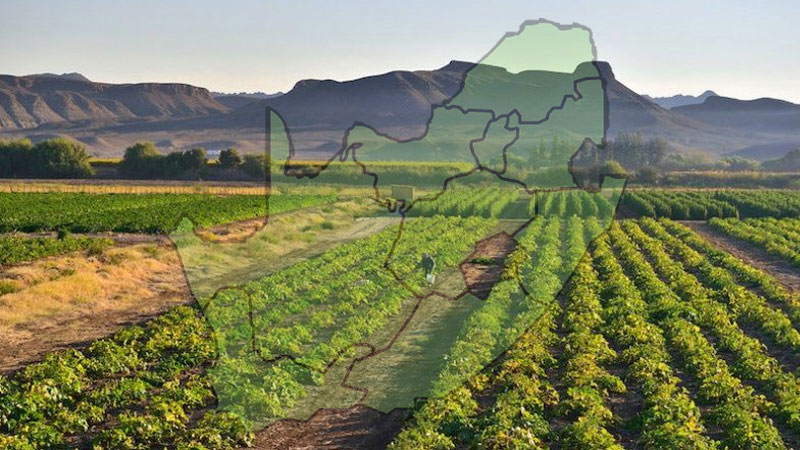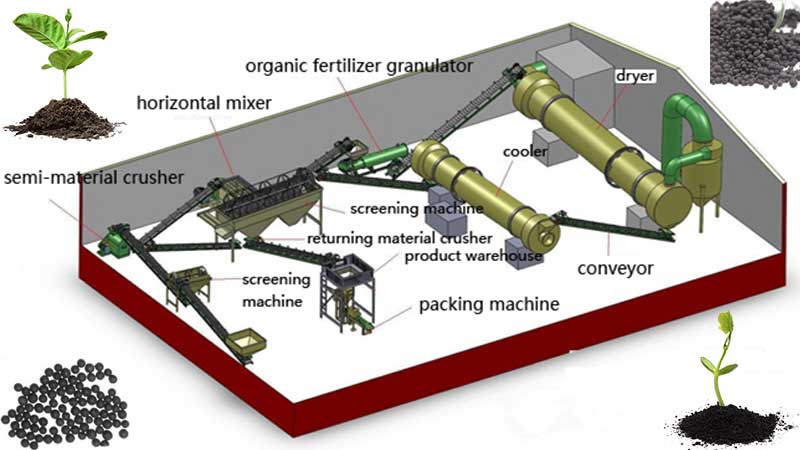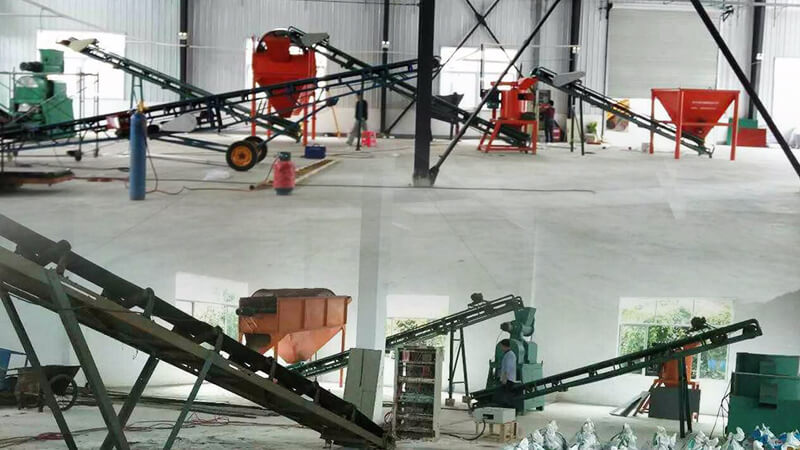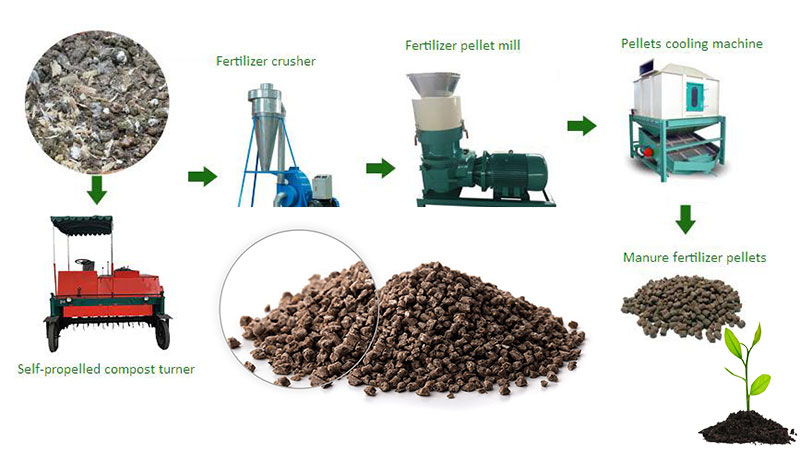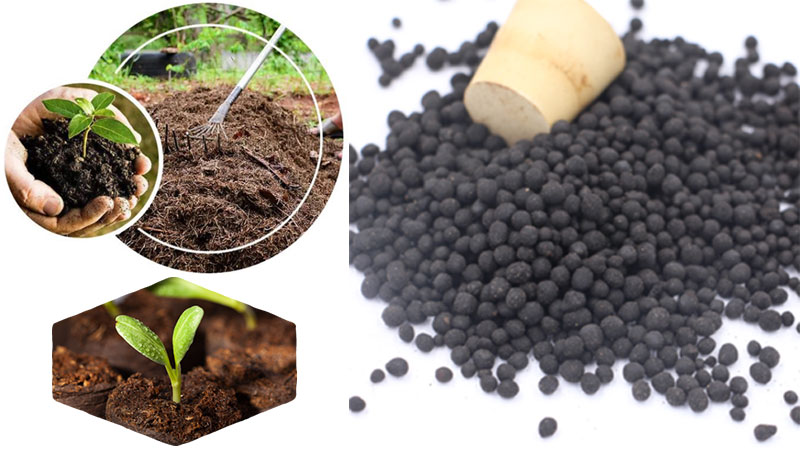Increase of Agricultural Output Stimulating Fertilizer Requirements
Republic of South Africa, also called South Africa, is located in the southernmost point of Africa. The average rainfall in South Africa is less than 500mm. It is tropical savanna climate in most areas. Its eastern coast belongs to tropical monsoon climate. However, it is mediterranean climate in Cape Flats. Because of diverse climate conditions and a varied topography, there are much few arable areas in South Africa.There are 15.36 million hectares of arable agricultural acreage, which is 14% of national territorial area. The per capita arable area is 0.4 hectare. Irrigation area is only 0.8 million hectares.
Maize is the staple food for South African residents, which ranks the first in Africa. In 2014, the area harvested of maize is 3,300,000 hectares and total production is 14,982,000 tons. South Africa is the largest sugar cane producing and exporting region in Africa. Perennial plantings are more than 300,000 hectares and the annual output reached 150-200 million tons. Moreover, it is rich in fruits, such as apples, peach, citrus and apricot. The annual output of fruits is more than 4,200,000 tons and the output of vegetables is approximately 2,100,000 tons. The development in agriculture is improved and agricultural output is increased year by year. It also shows that fertilizer market in South Africa is large.
South Africa’s economic development is taking a start in agriculture and animal husbandry, famous for mining and striving to developing manufacturing industry as one of mainstay industries. Currently, agriculture in South Africa accounts for only 4.54% of GDP in the national economy. Nevertheless, agriculture still plays an important role in the South African’s economy, and it is vital for the development and stability of the entire southern African region. In this way, fertilizer use in South Africa is growing steadily.
Fertilizer Production Less Than Consumption Leading to Net Fertilizer Import
Fertilizer production
In the early 20th, it started the mining industry, which accelerated the development in explosives. And then it produced large amount of sulphuric acid, which is the by-product. At first, fertilizer manufacturer used sulphuric acid in the fertilizer production in South Africa. It directly made the fertilizer industry begin sprouting in the country.
From World War II to 1980s, because good trade condition and government policy supply, the fertilizer industry developed rapidly. Farmers reclaim wasteland in remote and border areas, so it resulted in excessive fertilizer use in the country.
In 1984, it began opening-up in economy, causing restructuring in the whole fertilizer industry from 1980s to 1990s. What’s more, the fertilizer industry in South Africa is directly affected by world fertilizer market. In other words, fluctuations in prices and production are closely connected to international fertilizer market.
Due to major fertilizer plants closure in the late 1990s, South Africa is one of net fertilizer importer. In the meanwhile, South African fertilizer market is in keen competition. The main fertilizer manufacturers are Kynoch, Omnia and Foskor. These companies compete with others in fertilizer price, product types and special services.
Fertilizer consumption
According to statistics, fertilizer use in South Africa is urea, ammonuim sulphate, mono-ammonium phosphate, calcium ammonium nitriate and diammonium phosphate. With agricultural demand increasing, fertilizer consumption is continuously rising. The amount of urea is much in excess of other fertilizers. In 2011, South African fertilizer consumption amount is 60.3 million tons, Judging from the current demand condition, South African fertilizer consumption will continue to rise.
South Africa is deeply dependent on fertilizer imports. The main reason is that it lacks of potassium and has no complete urea production plants. In addition, owing to restricted productive power, the downstream fertilizer products are accordingly absent. Although it exports fertilizer to surrounding countries, it is a net importer of fertilizers.
As the table can be seen, fertilizer imports far exceeds fertilizer exports. There are several kinds of import fertilizers, including urea, ammonium sulphate, diammonium phosphate and calcium ammonium nitriate. It is more than 1,000,000 tons since 2010 while it is about 400,000 tons of fertilizer export. In 2009, import value is twice of export value. In 2012, fertilizer import value is more than three times of export value. It reflects that the domestic production can’t meet the demand of fertilizer consumption. Annual fertilizer net imports in South Africa is over 1,000,000 tons. And annual fertilizer imports are increasing year by year.
Local Fertilizer Price Fluctuated Steadily Compared with International Price
International fertilizer price, in general, is falling in 2014-2015. Urea price that is produced in Arab Gulf is in the largest reduction, reducing 23%. Affected of oil price reduction, urea production cost is reducing accordingly. Ammonia price that is produced in Yuzhny is reduced obviously, fell 32%. DAP price is reducing 12%. It is closely connected between local fertilizer prices and accordingly international fertilizer prices.
Fertilizer prices in South African are changed with international fertilizer market. It is taken into consideration of four types fertilizers in South Africa, including LAN, MAP, urea and MOP. Landed prices are influenced by changes in exchange rate. The other factor is that the border price.
Affected by international financial crisis, fertilizer price was falling. In addition, urea, phosphatic fertilizer and compound fertilizer is in excess production capacity. The production costs are being reduced. All the factors are the main reasons for reduction of fertilizer price in 2009. In the next few years, international fertilizer price is continually rising. The main reasons are reflected in rising costs of raw materials, currency inflation, increasing prices for agricultural products. Chemical fertilizer prices are fluctuated every year, which is affected by various factors in reality.
From the above two figures, we can see that local fertilizer prices are changed with the international fertilizer prices. It is because that most of fertilizer raw materials are imported from other countries, which causes the closely relation with international market. Therefore, the prices between international market and local market are often compared. At the same time, it affects export prices of South African fertilizers.
When comparing fertilizer prices year to year, international fertilizer prices are a little higher than local fertilizer prices. It is the result of conversion of exchange rate and border price. On the other hand, it shows that local fertilizer prices are steadily changed, no matter how international fertilizer prices escalate.
Coexisting of Well-established Fertilizer Factories and Newly-built Enterprises
Fertilizer industry in South Africa is leading by three companies, which is Omnia, Sasol and Profert. These companies have large fertilizer market share in South Africa. On the one hand, they have the deep understanding in core markets in South Africa. On the other hand, they have fundamental industries in the countries, such as mining industry.
These large fertilizer companies are in strong competition. In 2009, due to noncompetitive factor, Competiton Tribunal made the form of settlement reached between itself and Sasol. After that Sasol declared that it would stopped 5 regional fertilizer production lines. It meant that Sasol would not sell fertilizer directly to agricultural farmers any more since July, 2011.
The determination would have an important influence on local fertilizer industry in South Africa. In the meanwhile, many small fertilizer companies are established in the countries, and spring up like mushrooms.
Wide Application of Fertilizer in Agriculture and Horticulture in South Africa
From the table, it shows that the demand of N, P2O5 are relatively much higher than other chemical elements. Arable land in South Africa are relatively shorten. There are many disadvantages for agriculture, such as not much rainfall, water shortage and drought. The adverse natural conditions are bad for agricultural production. Due to above reasons, farmers use much fertilizer in order to increase yield. And fertilizer is characterized by quick efficiency, which can meet farmer’s demand. NPK fertilizer is still in large market demand in South Africa.
Sugar cane, specially speaking, has much dependence on fertilizer. Sugarcane has long growing season, and has high yield. The usage of fertilizer is the main factor that determines the level of production throughout the growing season. Due to large amount of fertilizer requirement, fertilizer accounts for a large proportion of the production costs for sugar cane.
Maize is the main food for South African residents. In the process of maize growth, nitrogen is the main nutrient. As for wheat, it needs much nitrogen and phosphatic fertilizer.
